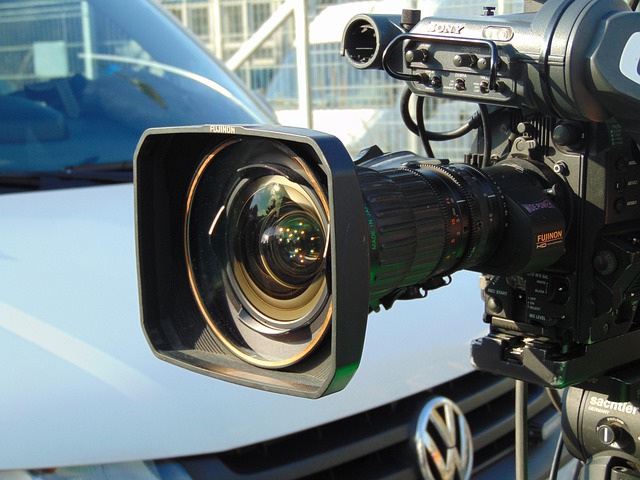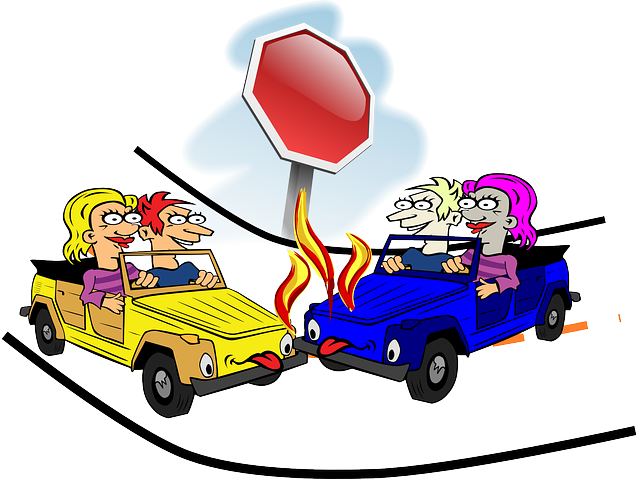Collision coverage, a critical component of comprehensive auto insurance, protects drivers from financial burden in car accidents by covering repairs, replacements, medical expenses, and other related costs. Offering tailored protection through options like comprehensive and specific collision insurance, it safeguards against both accident-related and non-accident damages. Understanding exclusions, comparing quotes based on vehicle details and personal history, and promptly filing claims with accurate documentation is essential for maximizing the benefits of collision coverage.
In today’s world, protecting your vehicle is paramount. Collision insurance stands as a crucial pillar of automotive ownership, offering financial solace in the event of accidents. This comprehensive guide delves into the intricacies of collision coverage, explaining what it entails and how it protects you. From understanding policy specifics to navigating claims, we explore types of coverage, benefits, and common exclusions. Armed with this knowledge, choose the right plan for peace of mind on the road.
Understanding Collision Insurance: What It Covers

Collision insurance, also known as collision coverage, is a type of automotive policy that provides financial protection against damages resulting from car accidents. This includes repairs or replacements for your vehicle if it’s damaged in a collision with another object, such as another vehicle, a tree, or a fence. It also typically covers the cost of medical expenses for any injured occupants of your vehicle.
Collision coverage is designed to safeguard you financially by taking care of these unexpected expenses. This can include repairs to your car’s body, engine, and other components, as well as towing and rental car costs if your vehicle is not drivable after an accident. It’s a vital component of any comprehensive auto insurance policy, ensuring that you’re prepared for the financial burden associated with vehicular collisions.
Types of Collision Coverage Available

When it comes to collision insurance, there are several types of coverage options available, each catering to different needs and preferences. Comprehensive coverage is a popular choice that protects against damages beyond accidents, including theft, vandalism, and natural disasters. This type of coverage is ideal for those who want peace of mind knowing their vehicle is shielded from various risks.
On the other hand, collision coverage specifically addresses damages resulting from accidents with other vehicles or objects. It covers repairs or replacements for your car, regardless of fault. This option is suitable for drivers who prioritize financial protection in case of an accident and don’t want to deal with high out-of-pocket expenses for repairs.
How Collision Insurance Works

Collision insurance is a crucial component of vehicle ownership, providing financial protection against unexpected incidents. When you have collision coverage, your policy kicks in to help pay for repairs or even replace your car if it’s damaged in a crash, regardless of who’s at fault. This peace of mind is invaluable, ensuring that a sudden accident doesn’t turn into a financial burden.
The process works by offering a safety net when you’re involved in a collision with another vehicle, a fixed object, or even during a single-car incident. Your collision insurance policy will cover the costs of repairing or replacing your vehicle up to its actual cash value. This includes expenses like parts replacement, labor fees, and sometimes even rental car costs while your vehicle is being repaired.
Benefits of Having Collision Coverage

Collision coverage plays a pivotal role in safeguarding your vehicle against unforeseen mishaps, offering numerous advantages for every driver. One of its key benefits is financial protection; should your car be involved in an accident, this coverage helps pay for repair or replacement costs, reducing out-of-pocket expenses significantly. It’s especially valuable when dealing with costly damages, ensuring you’re not left with a substantial bill.
Additionally, collision insurance provides peace of mind by offering comprehensive protection against various driving risks, from rear-end collisions to more severe accidents. This coverage can also cover situations like rolling your vehicle or colliding with stationary objects. By having this safety net in place, drivers can focus on their daily lives without the constant worry associated with potential vehicle damage.
Common Exclusions in Collision Policies

Collision insurance policies, while designed to protect against financial loss in case of an accident, do have certain exclusions. These are stipulations that indicate what is not covered under the policy. Common exclusions include damage caused by intentional acts, such as vandalism or theft, and incidents involving drunk driving or other forms of reckless behavior. Additionally, pre-existing damage, like a car crash in another jurisdiction that wasn’t reported, may not be covered by collision coverage.
Other exclusions might encompass certain types of weather events like flooding or earthquakes, as well as wear and tear or mechanical failures due to lack of maintenance. It’s crucial for vehicle owners to thoroughly review their policy documents to understand what is and isn’t considered a covered event under their specific collision coverage.
Choosing the Right Collision Insurance Plan

When selecting a collision insurance plan, it’s crucial to evaluate your vehicle’s make and model, its age, and your personal driving history. Collision coverage varies significantly based on these factors, with policies tailored to protect newer, high-end vehicles or those driven by safer drivers. Understanding the extent of potential repairs and deductibles is essential; higher deductibles often come with lower premiums but require a larger out-of-pocket expense in case of an accident.
Additionally, consider optional add-ons like rental car coverage, which can be invaluable if your vehicle is disabled for an extended period. Compare quotes from multiple insurers to ensure you’re getting the best value for your needs. Remember, the right collision insurance plan should offer adequate protection without breaking the bank, providing peace of mind on the road.
Claims Process and Tips for Collision Insurance

When filing a collision insurance claim, the first step is to notify your insurance provider as soon as possible after the incident. Provide them with essential details, including the date, time, and location of the collision, as well as a description of what happened. Your insurer will then guide you through the process, which typically involves reporting the accident to the police if it resulted in significant damage or injuries. They will assign an adjuster who will inspect the damaged vehicle, assess the repair costs, and determine the settlement amount.
To ensure a smoother claims process, keep detailed records of all expenses related to the collision. This includes not only the cost of repairs but also any additional expenses like rental car fees, taxi fares, or medical bills if applicable. Be sure to collect all necessary documentation from the other party involved and exchange insurance information. Promptly responding to your insurer’s requests and providing them with accurate, up-to-date information is crucial in facilitating a timely claim settlement. Remember that collision coverage is designed to protect you financially during such incidents, so understanding the claims process can help you make informed decisions and get back on the road faster.
